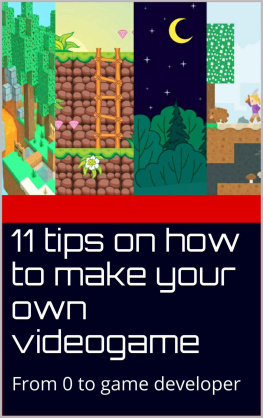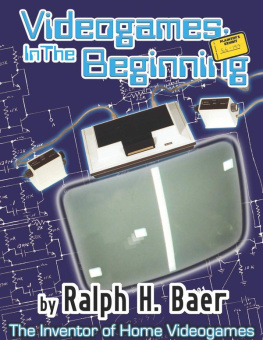A Play of Bodies
How We Perceive Videogames
Brendan Keogh
The MIT Press
Cambridge, Massachusetts
London, England
2018 Massachusetts Institute of Technology
All rights reserved. No part of this book may be reproduced in any form by any electronic or mechanical means (including photocopying, recording, or information storage and retrieval) without permission in writing from the publisher.
This book was set in ITC Stone Sans Std and ITC Stone Serif Std by Toppan Best-set Premedia Limited. Printed and bound in the United States of America.
Library of Congress Cataloging-in-Publication Data
Names: Keogh, Brendan, author.
Title: A play of bodies : how we perceive videogames / Brendan Keogh.
Description: Cambridge, MA : MIT Press, [2018] | Includes bibliographical references and index.
Identifiers: LCCN 2017031162 | ISBN 9780262037631 (hardcover : alk. paper)
eISBN 9780262345422
Subjects: LCSH: Video games--Psychological aspects. | Video games--Design. | Video games--Philosophy.
Classification: LCC GV1469.34.P79 K46 2018 | DDC 794.8--dc23 LC record available at https://lccn.loc.gov/2017031162
ePub Version 1.0
d_r0
The operation of expression, when successful, does not simply leave to the reader or the writer [themselves] a reminder; it makes the signification exist as a thing at the very heart of the text, it brings it to life in an organism of words, it installs this insignification in the writer or the reader like a new sense organ, and it opens a new field or a new dimension to our experience.
Maurice Merleau-Ponty, Phenomenology of Perception (2012)
When I looked into [a videogame arcade,] I could see in the physical intensity of their postures how rapt these kids were. It was like one of those closed systems out of a Pynchon novel: you had this feedback loop, with photons coming off the screen into the kids eyes, the neurons moving through their bodies, electrons moving through the computer. And these kids clearly believed in the space these games projected. Everyone who works with computers seems to develop an intuitive faith that theres some kind of actual space behind the screen.
William Gibson, interview (Greenland 1986)
Push buttons and analog sticks and watch for patterns in response until you have a sense of the relationship between the two.
Cardboard Computer, Kentucky Route Zero README.txt (2013)
Acknowledgments
This book owes its existence to the support, guidance, feedback, and inspiration offered by a range of colleagues, videogame designers and critics, and friends. I wish to thank in particular Larissa Hjorth, Christian McCrea, Daniel Golding, Thomas Apperley, Julie Berents, Darshana Jayemanne, Benjamin Abraham, Leena van Deventer, Benjamin Nicoll, Cameron Kunzelman, Emily van der Nagel, Michael McMaster, James Meese, Heidi Hoffman-White, April Tyack, Doug Wilson, Claire Hosking, Marcus Carter, Fraser Allison, Zoya Street, Robbie Fordyce, Luke van Ryn, Sam Crisp, Zolani Stewart, Seth Giddings, Ingrid Richardson, Marigold Bartlett, Terry Burdak, Jason Wilson, and James Manning. I also owe endless gratitude to my partner, Helen Berents, for her love, support, and stoic efforts to read more rough drafts and overwrought sentences than anyone should ever have to deal with in a single lifetime.
Parts of this book draw from and extend on arguments I have made in previous publications. An earlier version of the theoretical foundations of chapter 1 is found in Across Worlds and Bodies: Criticism in the Age of Videogames, Journal of Game Criticism 1 (2014): 126. The analysis of Angry Birds in chapter 2 extends on my essay Paying Attention to Angry Birds: Rearticulating Hybrid Worlds and Embodied Play through Casual iPhone Games, in The Routledge Companion to Mobile Media, ed. Gerard Goggin and Larissa Hjorth, 267276 (New York: Routledge, 2014). Parts of chapter 5 draw from my previous writing about videogame time and memory in my essays You Really Are You, Right?: Cybernetic Memory and the Constitution of the Posthuman Self in Videogame Play, in Design, Mediation, and the Posthuman, ed. Dennis M. Weiss, Amy D. Propen, and Colbey Emmerson Reid, 233248 (London: Lexington Books), 2014), and When Game Over Means Game Over: Using Permanent Death to Craft Living Stories in Minecraft, paper presented at the Ninth Australasian Conference on Interactive Entertainment, Melbourne, 2013. The brief discussion of Binary Domain in chapter 6 draws from a longer analysis in my article Hackers and Cyborgs: Binary Domain and Two Formative Videogame Technicities, Transactions of the Digital Games Research Association 2 (3) (2016): 195220. My thanks go out to all the reviewers and editors of these previous publications as well as of this current book for constantly challenging and strengthening my work.
Introduction
At night you can see the lights sometimes from a passing tanker or trawler. From up on the cliffs they are mundane, but down here they fugue into ambiguity. For instance, I cannot readily tell if they belong above or below the waves. The distinction now seems mundane; why not everything all at once!
Narrator, Dear Esther (The Chinese Room 2012)
MediaMolecules videogame Tearaway (2013) begins with an ultimatum from its two narrators: This is not your world.
In Tearaway, I navigate a humanoid creature with an envelope head named Iota through a papercraft world. I walk past cardboard trees and through confetti blizzards. Fern trees uncurl in streamers; houses stand as creased cardboard. The ground I walk over moves under Iotas slight weight, like a piece of paper gently pressed by a finger. In this conventional platforming videogame, I move around the world to solve simple puzzles and fight off enemy scraps; I pick up items and throw them around.
Except I do not do these actions. I do not jump while playing Tearaway, nor do I fight. I hold a PlayStation Vita videogame device in my hands, and I look at its screen, and I listen to the sounds it produces as I move my thumbs over its buttons and thumbsticks (miniature joysticks that can be moved with a single thumb). It is Iota who jumps and moves and attacks and throws in response to the movement of my body against a piece of hardware. The continuous movement of my thumb through space is detected by the Vita so that when my flesh pushes against the X button, a digital switch is flicked from 0 to 1 to tell the videogame that Iota should be animated in such a way as to jump. But even Iota isnt really jumping. Iota doesnt exist. Iota is just a variety of pixels on a flat screen turning on and off in quick succession according to principles of animation and perspective that allow me to perceive a three-dimensional (3D) creature jumping through a 3D space in response to my thumb pushing down the X button. But it would be wrong to say I feel distinct from the actions that Iota, my playable character, is shown to be performing at my behest. I feel a sense of presence through and as Iota, a sense of participation. If you were to ask me what I was doing while I played Tearaway, I would say simply, I am jumping, not I am pressing the X button.
But Iota is not all I am able to control in Tearaways world. Tearaway is peppered with moments that harness the diverse input systems and affordances of the PlayStation Vita hardware. As I rub my left and right thumbs against the devices small thumbsticks, paper mushrooms along Iotas path spin and dance in different directions; I push my finger against the glass of the Vitas touchscreen where the videogame presents grubby fingerprints, and I drag objects around the world, remove obstacles, and extend origami ledges for Iota to walk across. Some parts of the world are patches of translucent white paper with a pattern of Xs, squares, triangles, and circles that mimic the pattern of the Vitas

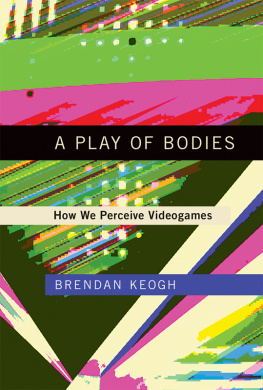



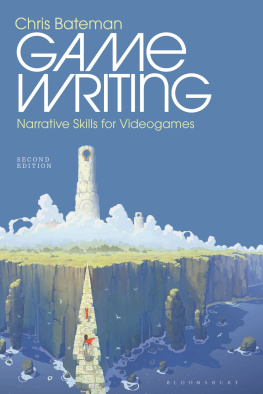
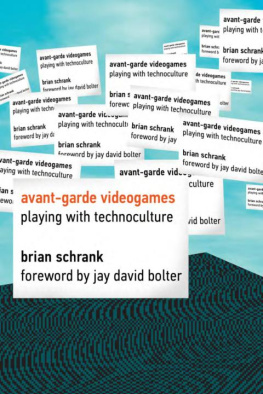

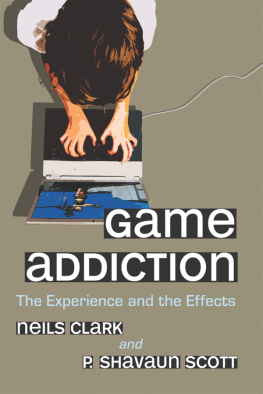
![Chris Bateman [Chris Bateman] - Beyond Game Design: Nine Steps Toward Creating Better Videogames](/uploads/posts/book/119409/thumbs/chris-bateman-chris-bateman-beyond-game-design.jpg)
